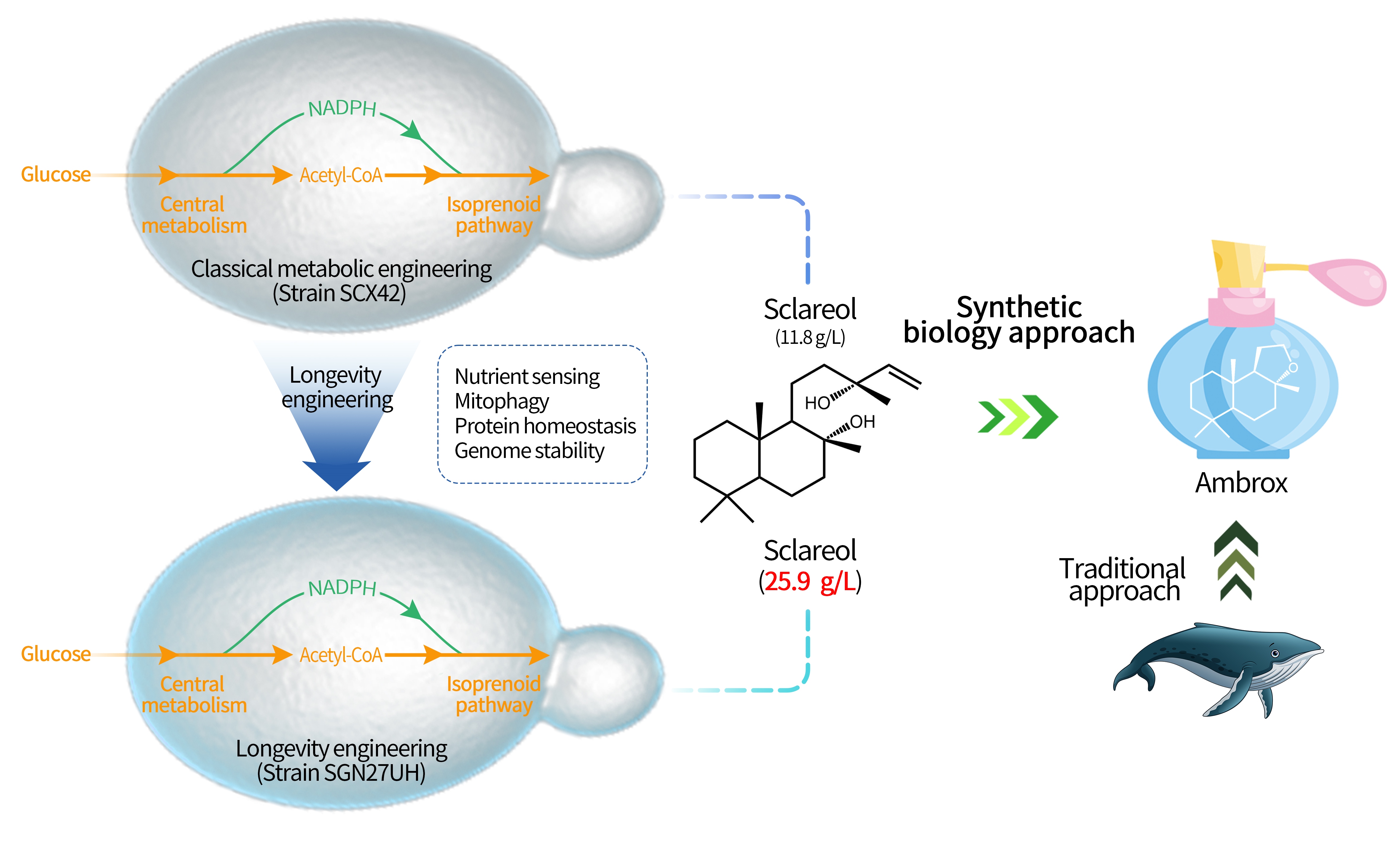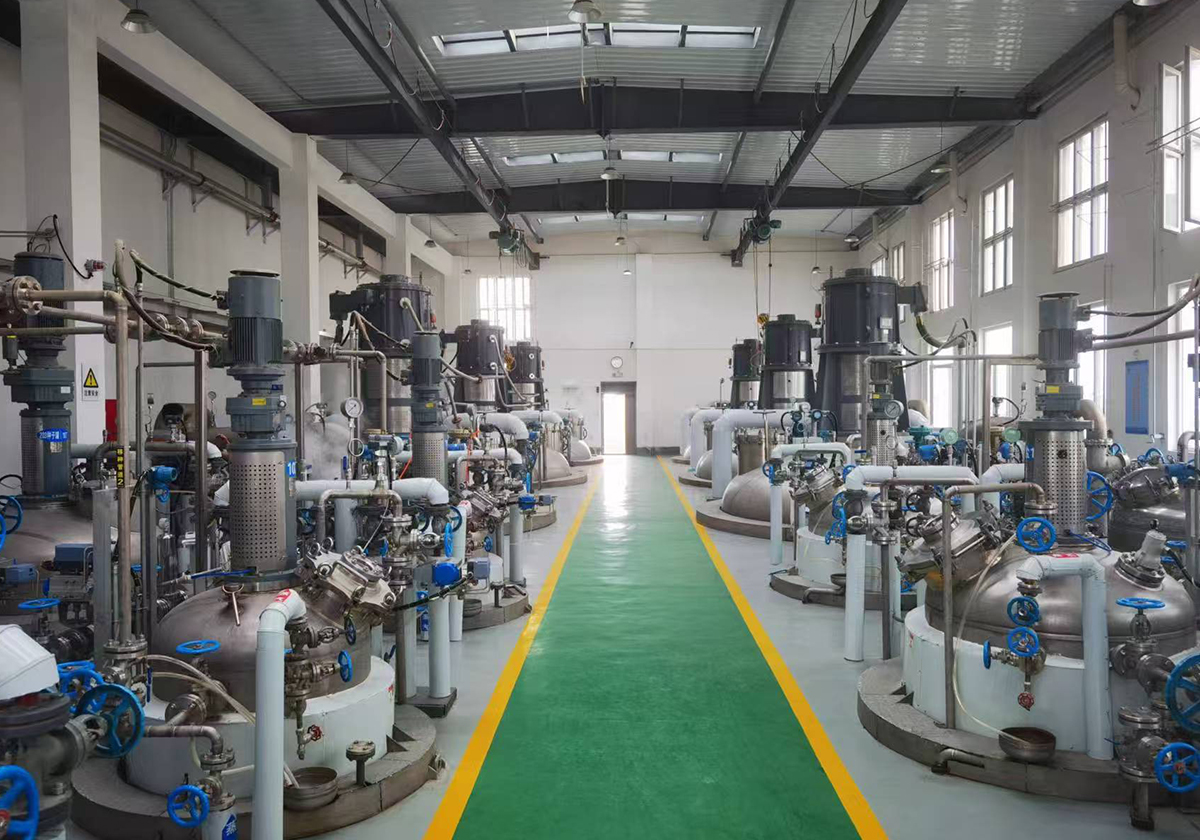Sclareol is a valuable diterpene alcohol extracted from Salvia sclarea. It is widely used in pharmaceuticals and agrochemicals, and serves as a key precursor for synthesizing the high-value fragrance compound ambergris.
While metabolic engineering has enabled the construction of efficient microbial cell factories, cellular aging and the accumulation of toxic metabolites during prolonged fed-batch fermentation induce metabolic stress, ultimately reducing cell productivity. Therefore, extending cellular lifespan represents an effective strategy to enhance biosynthetic capacity.


Our group has achieved an advance in improving microbial production through lifespan engineering. Their findings, published in Proceedings of the National Academy of Sciences of the United States of America, demonstrate that combining lifespan engineering strategies with metabolic pathway optimization in Saccharomyces cerevisiae enables highly efficient sclareol biosynthesis.
Building on the high-producing sclareol strain, the researchers systematically engineered cellular lifespan through four dimensions: nutrient sensing, mitophagy, protein stability, and genomic stability. Specifically, simultaneously weakening nutrient sensing and enhancing mitophagy, together with metabolic pathway optimization, resulted in a sclareol production of 25.9 g/L. Omics analysis showed that these strategies enhanced central metabolism and cellular robustness by extending chronological lifespan and regulating metabolic gene expression, thereby improving product synthesis during the later stages of cell growth.
In addition, this lifespan engineering strategy also improved the biosynthesis of other products, such as sesquiterpenes and phenolic acids, indicating its broad applicability and providing a generalizable approach for developing high-performance microbial cell factories.
"Our work not only establishes a clear connection between chronological lifespan and biosynthesis capacity for improving sclareol production," said Prof. ZHOU, "but also offers a feasible longevity engineering strategy that can be extended to diverse microbial cell factories for sustainable and economical biomanufacturing." (Text and image by Zulin Wu and Jiaoqi Gao)
Link: https://doi.org/10.1073/pnas.2515324122
中文版

